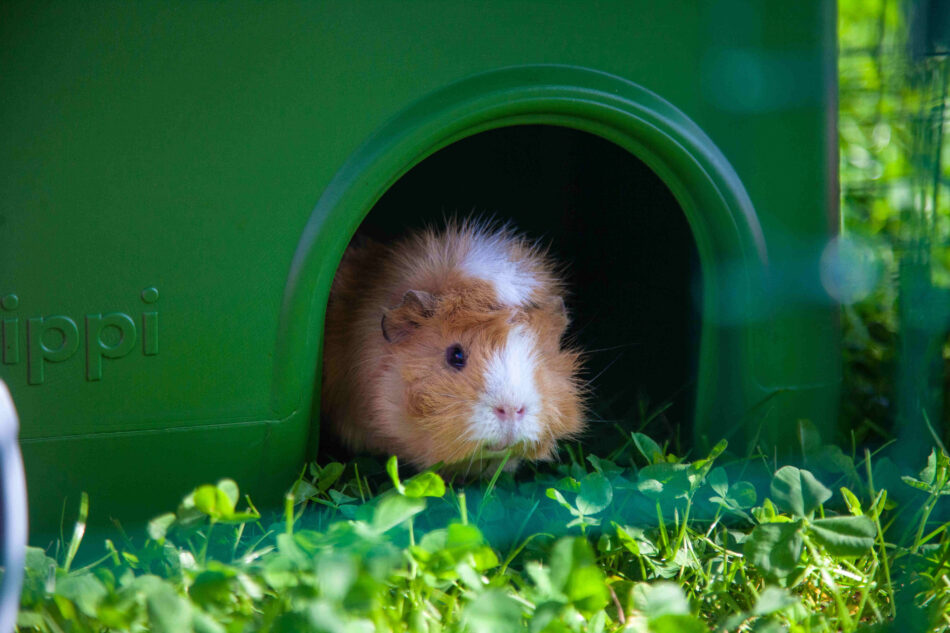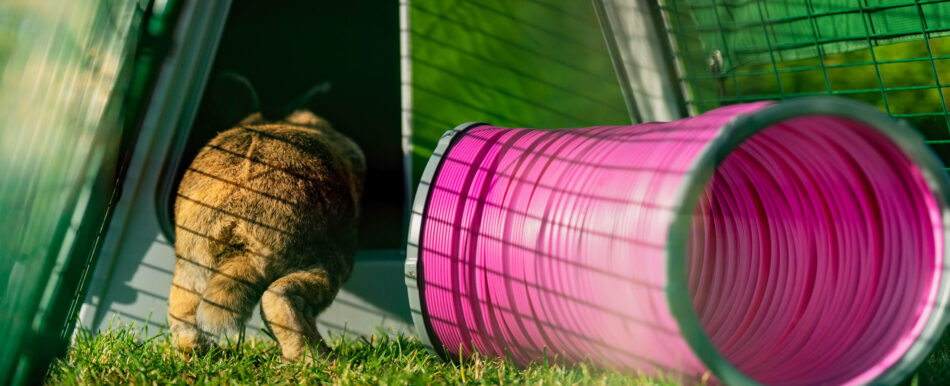Helping your rabbits and guinea pigs cope with the changing seasons
It’s officially fall — the air is crisp, the leaves are changing, and the temperatures are dropping. But these changes don’t go unnoticed by your four-legged family members. Find out how to help your rabbits and guinea pigs cope with the changing seasons, and learn what to expect from your pets as they make the transition into the colder, wetter weather.
Combating the cold
For many rabbit and guinea pig owners, cold weather is a reality that fall brings. The best way to help your pets cope with the cooler temperatures is to ensure they have an insulated rabbit and guinea pig hutch. This will give them a reprieve from the bite in the air, and allows them to acclimate to the outdoor temperatures on their own terms.
While most bunnies and cavies that are accustomed to spending time outdoors will thrive in the crisp temperatures, it’s important to keep a close eye on them. Watch for signs of hypothermia in rabbits and guinea pigs, which include:
- Shivering
- Lethargy
- Pale feet or mucous membranes
As the temperatures approach freezing, it’s especially important to keep an eye on your guinea pigs. While they can thrive outdoors throughout the majority of the year, if you live in an area that experiences extreme temperatures, it’s time to bring your guinea pigs indoors for the season. Skinny pigs are of particular concern, and should not be housed outdoors during any season. Since they lack fur, they aren’t able to regulate their body temperature as well as their furry cousins.
Support through the storms
Some rabbit and guinea pig owners have to prepare for wild weather events during the change of seasons. The cooler fall air mingled with the lingering warm weather has the potential to cause severe storms and heavy rainfall. For coastal regions, this may even mean preparing your bunnies and cavies for hurricane season, which peaks during the fall. Equipping your rabbits’ or guinea pigs’ hutch with wheels and handles enables you to move their setup whenever severe weather is in the forecast.
Rabbit and guinea pig run covers will keep the worst of the weather off of your pets. The clear covers allow warming sunlight for your bunnies to bask in, while being waterproof to keep your cavies clean and dry. When positioned along the sides of the run, these covers act as a barrier from the brisk winds.
When fur falls
Leaves aren’t the only things falling — you’re likely seeing tufts of your rabbits and guinea pigs hair tumbling around their run. This is due to the phenomenon known as molting. Molting is a process that nearly every furred or feathered animal experiences, involving the loss of fur or feathers in order to grow new ones. Most animals molt in the spring to shed excess fur for the summer, and in the fall to grow more dense coats for the approaching colder weather.
Rabbits molt during the fall, resulting in discolored or uneven coats. Guinea pigs molt too, but depending on their breed, the texture of most guinea pig coats won’t have overly noticeable signs of their transformation.
Providing your pets of either species with plenty of water and nutrition-dense foods will support them throughout this process. And, because molting takes a lot of their energy, your cavies and bunnies may be more hungry than usual. Some nutritious treats to offer them include: fresh greens, squash, carrot tops, herbs, and bell pepper. Be sure to offer quality hay, preferably Timothy or orchard grass hay, at all times to help their digestive system move along. This is especially important in rabbits, who groom themselves meticulously and may ingest loose fur.
Hair loss from molting should improve within a few weeks. If you see bald patches or red, irritated skin, these are not usual signs of molting. Your bunnies and cavies should shed their old coats and don bright, healthy, new coats just in time for the winter.
Monitor for other changes
Along with the change in the weather, allergies are abundant. But pollen and chilly breezes can also irritate your rabbits and guinea pigs. Not all small animals will react to these changes, but some bunnies and cavies may be sensitive to these invisible irritants.
Performing regular health checks on your rabbits and guinea pigs will alert you to any changes in their demeanor or appearance. In the fall especially, be on the lookout for:
- Watery or crusty eyes and noses
- Hair loss from molting that doesn’t seem to be growing back
- Red, flaky, or irritated skin
If you notice changes in your rabbits and guinea pigs, contact your veterinarian. The fluctuations in weather patterns and temperature can affect some pets’ immune systems. Changing their bedding frequently and offering healthy treats like fresh fruits and vegetables will help support a healthy immune system. Opt for absorbent, dust-free bedding like recycled paper pulp or pine pellets, and choose an easy-to-clean rabbit and guinea pig hutches to ensure their health in every season.
Omlet and your pets
Providing your bunnies and cavies with supportive rabbit hutches and guinea pig hutches is your first line of defense against the elements. No matter the season, our insulated, easy to clean hutches will keep them safe, dry, and comfortable through any season. Combine them with outdoor pet runs and our one-of-a-kind rabbit and guinea pig tunnels, and you’ll provide them with hours of enrichment for warm hearts and bodies.
This entry was posted in Guinea Pigs


